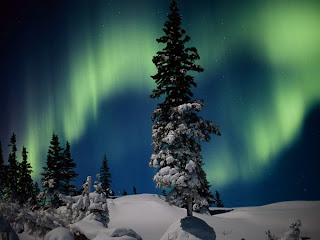Half of your DNA is determined by your mother's side, and half is by your father. So, say, if you seem to look exactly like your mother, and had gotten all phenotypes from her, perhaps some DNA that codes for your body and how your organs run was copied from your father's genetic makeup.
So close, yet so far. This quote, taken from a high school student's submission in a national essay contest, represents just one of countless misconceptions many people have about the basic nature of heredity and how our bodies read the instructions stored in our genetic material (Shaw et al. 2008). Although it is true that half of our genome is inherited from our mother and half from our father, it is certainly not the case that only some of our cells receive instructions from only some of our DNA. Rather, every diploid, nucleated cell in our body contains a full complement of chromosomes, and our specific cellular phenotypes are the result of complex patterns of gene expression and regulation.
In fact, it is through this dynamic regulation of gene expression that organismal complexity is determined. For example, when the first draft of the human genome was published in 2003, scientists were surprised to find that sequence analysis revealed only around 25,000 genes, instead of the 50,000 to 100,000 genes originally hypothesized. Clues from studies examining thegenomic structure of a variety of organisms suggest that much of human uniqueness lies not in our number of genes, but instead in our regulatory control over when and where certain genes are expressed.
Additional examination of different organisms has revealed that all genomes are more complex and dynamic than previously thought. Thus, the central dogma proposed by Francis Crick as early as 1958 — that DNA encodes RNA, which is translated into protein — is now considered overly simplistic. Today, scientists know that beyond the three types of RNA that make the central dogma possible (mRNA, tRNA, and rRNA), there are many additional varieties of functional RNA within cells, many of which serve a number of known (and unknown) functions, including regulation of gene expression. Understanding how thestructure of these and other nucleic acids belies their function at both the macroscopic and microscopic levels, and discovering how that understanding can be manipulated, is the essence of where genetics and molecular biology converge.
Detailed comparative analysis of different organisms' genomes has also shed light on the genetics of evolutionary history. Using molecular approaches, information about mutation rates, and other tools, scientists continue to add more detail to phylogenetic trees, which tell us about the relationships between the marvelous variety of organisms that have existed throughout the planet's history. Examining how different processes shape populations through the culling or maintenance of deleterious or beneficial alleles lies at the heart of the field of population genetics.
Within a population, beneficial alleles are typically maintained through positive natural selection, while alleles that compromise fitness are often removed via negative selection. Some detrimental alleles may remain, however, and a number of these alleles are associated with disease. Many common human diseases, such as asthma, cardiovascular disease, and various forms of cancer, are complex-in other words, they arise from the interaction between multiple alleles at different genetic loci with cues from the environment. Other diseases, which are significantly less prevalent, are inherited. For instance, phenylketonuria (PKU) was the first disease shown to have a recessive pattern of inheritance. Other conditions, like Huntington's disease, are associated with dominant alleles, while still other disorders are sex-linked-a concept that was first identified through studies involving mutations in the common fruit fly. Still other diseases, like Down syndrome, are linked to chromosomal aberrations that can be identified through cytogenetic techniques that examine chromosome structure and number.
Our understanding in all these fields has blossomed in recent years. Thanks to the merger of molecular biology techniques with improved knowledge of genetics, scientists are now able to create transgenic organisms that have specific characters, test embryos for a variety of traits in vitro, and develop all manner of diagnostic tests capable of identifying individuals at risk for particular disorders. This interplay between genetics and society makes it crucial for all of us to grasp the science behind these techniques in order to better inform our decisions at the doctor, at the grocery store, and at home.
As we seek to cultivate this understanding of modern genetics, it is critical to remember that the misconceptions expressed in the aforementioned essay are the same ones that many individuals carry with them. Thus, when working together, faculty and students need to explore not only what we know about genetics, but also what data and evidence support these claims. Only when we are equipped with the ability to reach our own conclusions will our misconceptions be altered. Scitable brings us one step closer to that outcome.





















































